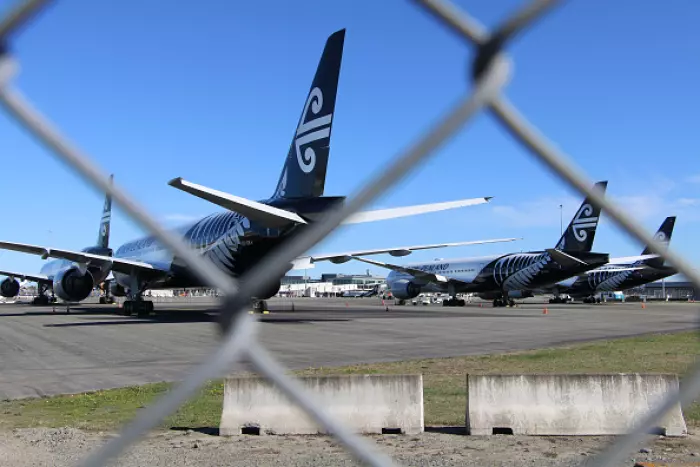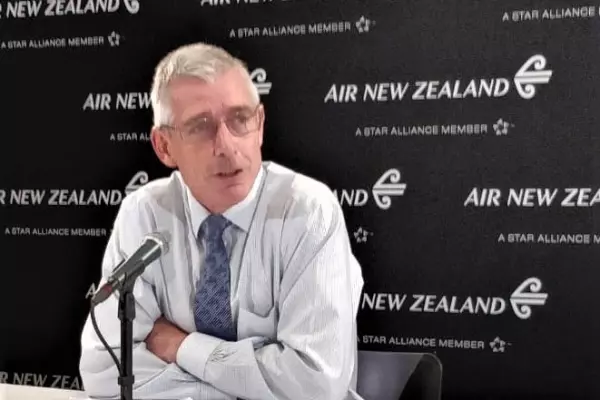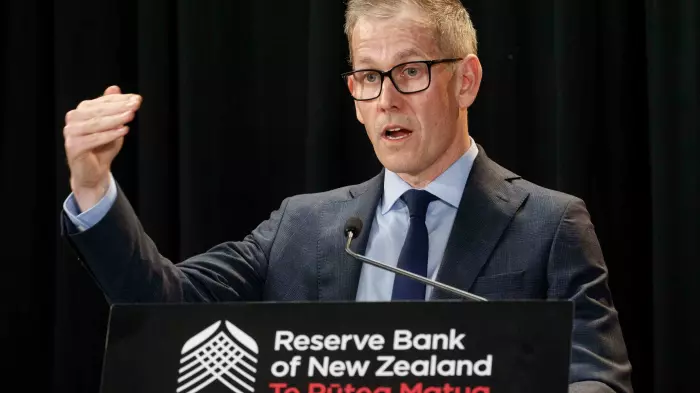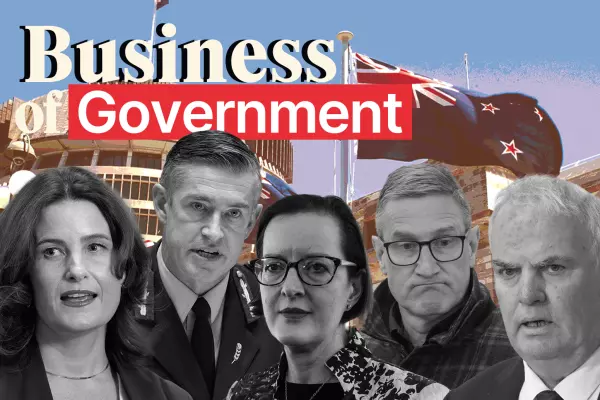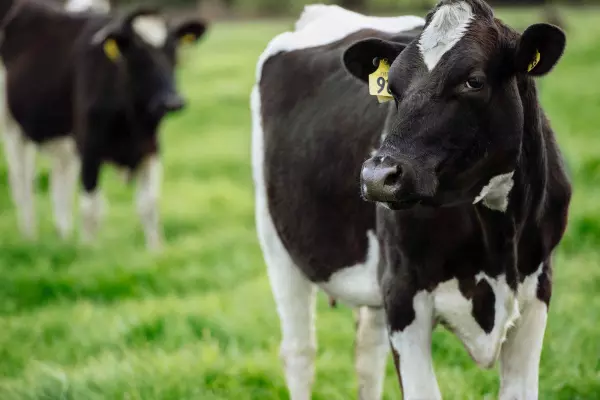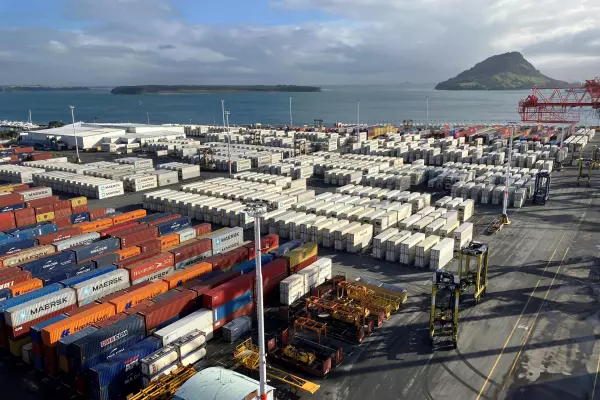Like Auckland International Airport, Millennium & Copthorne Hotels, or any one of a clutch of listed companies exposed to the collapse in travel and tourism caused by covid-19, the national airline’s numbers will be ugly but not unexpected.
Broking house Jarden, for example, reckons adjusted net profit after tax will show a whopping loss of $193.6 million for the six months to Dec 31, putting Air NZ on the path to a current forecast loss for the year of $341.5m.
The numbers may not pan out exactly like that. There are simply too many uncertainties in a covid-affected world.
However, if the cloak of covid starts to lift as 2021 wears on, it is reasonable to think that a thumping loss in the year to June 30 will be followed by a bounceback. Jarden has Air NZ at $19.9m for adjusted NPAT in the year to June 2022, rising to $209.7m in the 2023 financial year.
That’s still some distance away from the $270m reported in the year to June 2019, when annual revenues were approaching $6 billion.
But for any of that to happen, Air NZ needs two things to happen, only one of which it can control.
The first is the retreat of covid, the uncontrollable.
The second is finding the cash to get through the next 18 months.
For that reason, the most important elements of this week’s announcement will be:
- Ongoing evidence that the airline has the ability to continue to control its costs in the flexible, if savage, way that it has over the last year, and
- Far more detail on the capital raising it has announced will occur by June 30.
So far, Air NZ has got through on a combination of heavy staff cuts, grounding planes, massive government subsidies that have kept vital airfreight and limited international passenger services running and, remarkably for most airlines around the world, restoring domestic travel to very near its pre-covid schedule.
Also vital has been the $900m government loan facility, announced just before the level 4 lockdown last March. Negotiated at controversially high-interest rates of 7-to-8% for the first tranche of $600m and 9% for the remaining $300m. It was never going to be enough but it bought time.
With the domestic network approaching pre-covid levels, the airline has about a third of its previous revenue back.
But it would only hope to stop burning cash if it also had back its Australian and Pacific routes - about two-thirds of previous activity, chief executive Greg Foran told a parliamentary select committee earlier this month.
As the 12 month anniversary of the $900m loan arrangement looms, Jarden estimates that available working capital, including remaining government support, will have shrunk from about $1.1b last August to between $500m and $600m at Dec 31. Net debt is likely to be close to $3.5b, from $3b six months earlier.
“Assuming a minimum cash working capital requirement of $250m, this would leave only $250m-to-$300m of available cash headroom,” Jarden analysts Andrew Steele and Lily Zhuang suggested in a note reiterating their ‘sell’ rating on Air NZ, which was trading late last week at $1.55 and on which Jarden has a target price of $1.25.
On that basis, Jarden expects the airline will seek to raise around $1.5b to repay however much of the high-interest government loan as quickly as possible and to ensure it has at least $250m of working capital and can cover ongoing cash burn.
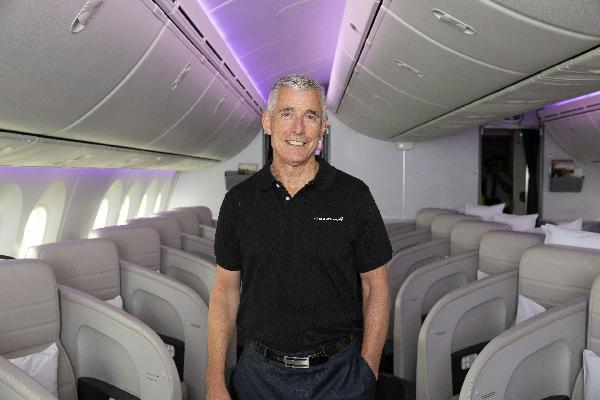
In an interview with BusinessDesk on Feb 10, Foran (above) was in no position to discuss these plans.
“I may go too far and it’s so complicated,” he said.
But he did know that one important building block was in place. The next day, the airline would announce the government had committed to participate in the placement to keep its 52% majority shareholding.
While there is no sign yet of what price those shares will be offered at, the Crown support tells other investors everything they need to know about the NZ government’s commitment to keeping Air NZ flying.
To Foran and his team falls the unenviable task of working out the practical reality of achieving that.
In a wide-ranging discussion, the CEO of the last 11 months did open up on his thoughts about the future, both of the airline and air travel generally.
When will there be a trans-Tasman bubble?
Foran appears genuinely to have stopped trying to guess.
While both Australia and NZ are experiencing short lockdowns that would be hugely disruptive to passengers stuck on either side of the Ditch, he can’t see it happening.
However, the two countries may find they follow similar timetables for national vaccinations capable of giving herd immunity.
“When you put all those things together, we may find we will not be opening up quite as quickly, but when we do open, we stay open. I keep an open mind but I find it too difficult to predict.”
The airline is progressively bringing its furloughed domestic crew back to work and will use the same well-oiled systems to approach international crew, as demand increases.
The ability to flexibly ramp up would only take the airline a few weeks.
For now, however, it appears to have perfected the art of keeping unused capacity on ice, ready to deploy within a few weeks’ notice.
Which routes to keep, and which to drop
North America is key, Hong Kong and Singapore are vital. China is important, but tricky because Air NZ struggled for efficient landing slots and was losing money on its Shanghai and Beijing routes prior to covid-19.
Air NZ will always be on the trans-Tasman routes, notwithstanding it being extremely competitive at times because it is in the airline’s back yard. Likewise servicing the Pacific Islands.
“We have to be there. It’s just difficult to get any sustainable competitive advantage. It’s like a shop that sells milk and bananas. Customers want it. You just have to accept there will be other things we will do that will be more competitive.”
Japan, too, “remains a really important market to us”.
To the suggestion that that’s because Air NZ has had a monopoly on direct services for years, Foran gives that slightly hooded grin of his and says: “I didn’t want to be quite that bold.”
At risk are routes like the direct services to Seoul and Taipei, neither of which appears to be a strategic priority. Seasonal direct flights to holiday destinations like Bali will be reassessed as international travel resumes.
The marginal Auckland-Buenos Aires route is likely to remain a low priority for reinstatement.
“Some routes can make sense in a benign environment, but they aren’t a great strategic fit,” Foran says. “Part of what makes an airline work is scale on particular routes."
Will international travel rebound?
Foran thinks this will happen slowly, with a burst of initial pent-up demand followed by “a more measured approach”.
He thinks it will take six or seven years for international air travel to return to pre-covid volumes and it is simply impossible to know what permanent changes the pandemic will create to traveller patterns.
Travel software firm Serko, for example, can see evidence that business travel has been starting to take off again in Australia, led by salespeople who live and die by face-to-face contact and cannot afford to sit in an office and hope to drive orders without it.
One of the unknowables is whether competitors will behave “rationally”, he says. That is another reason for favouring North America. Carriers there are unlikely to do commercially irrational things, whereas he singles out Middle Eastern airlines’ decision-making as not fitting that mould.
Foran expects vaccination will be a requirement for international travel. With vaccine hesitancy spread widely in the community, he anticipates the need for a major communications campaign led by the government and backed by employers to encourage uptake.
“It feels like in 18 months or so we will be flying some mid-haul and potentially some long-haul but it may still be a bit clunky.”
Point-to-point vs hub and spoke
Greg Foran likes airline routes that fly over water because no one can get on or off and connect with another airline.
He’s also a big fan of very high-frequency services to a few key places. Los Angeles, for example, may not be the most pleasant international airport in the world, but it is a connecting point for hundreds of other North American destinations.
“Los Angeles three-times-a-week may be OK. Five times is good. Seven times is even better.
“Fourteen times is terrific because you can then leverage all your costs,” he says. For example, ground crew, catering, airport services of all kinds and “it’s great for the customer, as opposed to Chicago Monday/Wednesday/Friday.”
“In the US, you may be hanging out to do direct New York or Chicago flights. But if you’re not, you need a good alliance to get to other US cities."
However, Foran still sees plenty of potential in point-to-point services between NZ and Chicago and New York.
“We still think it makes sense,” he says of the Chicago route, which was just becoming established after launching in November 2018, and the Big Apple route that would have launched last October but was canned due to covid.
Both are prime catchments for the high-value travellers who make the North American market so attractive for Air NZ when it returns to long haul flying.
“There are a reasonable amount of Americans who like to travel to NZ for a holiday. It may be a once in a lifetime trip for them and they will quite often be premium economy or even business class. It fits our customer and (Boeing) 787-9s allow us to do it.
“It feels to me as if the concept of having a more efficient plane that carries fewer customers and can fly point-to-point more effectively is a pretty good option for the next few years.”
Aviation analyst and commentator David Mackenzie says the airline could look to the Airbus A321XLR to help in its recovery. This plane does what it says in the title; which stands for extra long-range and Qantas has already ordered 36 of them.
“A321XLR aircraft will be valuable in developing long thin routes. They are cheaper to operate than wide-bodies, make a sustainability contribution with the latest technology engines, and would be a useful frequency tool.”
He says seat manufacturers are coming up with all sorts of ways to configure seating in these aircraft, including a premium class that will allow a narrow-body single-aisle aircraft to offer something required by the important premium market segment.
Mackenzie says Air New Zealand will be underway preparing its capital raising programme, previously announced by the airline. That will require the airline to make some strategic decisions around future routes, demand, and fleet, so that it has a plan on which to base its revenue and expenditure assumptions.
Mackenzie says domestic gives the airline about one-third of revenue, and another third comes from trans-Tasman and Pacific. That’s not so hard to project, he says, but the unknown is long-haul, and it might require the cautious, but still profitable approach that A321 XLR aircraft could bring.
The government has said it will retain its 52% shareholding, and Mackenzie thinks that may increase if it ends up underwriting the raise. The terms of the loan extended to the airline by the government could also see its shareholding increased if the money is converted into equity, one of the provisions said to be in the deal with the government, Mackenzie says.
It would be pointless to raise money and then pay back the government loan in cash, he says. If the loan is fully drawn down by the time of the capital raise, then with interest, the first billion would be paid to the government in that case.
Depending on the size of the capital raise, full repayment may not help the airline’s cash needs. A partial repayment might fit, but this will all become clear when the airline details its capital raising plan for the market, Mackenzie says.
Domestic routes: the reviving core
As of Monday, Feb 15, Air NZ’s domestic network schedule had returned to 93% of what it was before the March 2020 level 4 lockdown that saw the airline all but knocked from the sky in the early days of the pandemic.
Koru lounges are open again. At Wellington airport, where passengers have been boarding through the Jetstar and international gates for most of the last year, the Air NZ ‘side’ of the airport is open again. Returning to travellers the ‘spooky prison tunnel’ experience that was part of the temporary covid disembarkation.
The high cost of flying to regional destinations remains a sore point for customers and Foran isn’t commenting on whether it will add or return flights to some far-flung regional destinations, although he says “you can always improve your core”.
That core is going to be vital in the year ahead.
New forecasts by broking firm Jarden suggest there will 6.8m available seat kilometres (Asks) on short-haul routes in the year to June this year, rising to 15.8m Asks in the 2022 financial year. The 2022 figure includes some Australian and Pacific flying but is still lower than the 20.7m Asks recorded in the year to June 2019 — the last full year before covid struck.
The comparison with Asks on long haul routes is telling. In 2019, long haul Asks totalled 25.3m. In the current year, they are decimated at a forecast 2.8m, recovering to just 8m next year.
It’s not until 2023 that domestic Asks almost recover to 2019 levels, while Jarden is forecasting long haul Asks will still be substantially lower than 2019, at 17.7m.
Further out, Foran sees potential for very short domestic services to small centres being served by electric planes, the first of which may be only a couple of years away from commercialisation.
Is airfreight the future?
Some $372m of government subsidies have kept international airfreight services operating, with much if not all of that funding allocated to Air NZ.
While that has been a vital lifeline for exporters, Air NZ has not converted any passenger planes to carry freight only and Foran warns that when the world returns to a new normal, there can be no expectation that the current shortage of airfreight capacity will continue.
What else can the airline do?
Mention the Air NZ Airpoints scheme and Foran brightens slightly.
For many airlines, the Airpoints scheme is a business within a business and a highly lucrative one at that. Back in 2014, Qantas’s loyalty programme was so valuable that there was prolonged speculation it could be listed separately on the ASX at an initial value of A$2.5b.
While the rest of Air NZ has been shrinking, its Airpoints programme has been spreading out into a wider range of retail outlets and pushing more into tourism experiences.
The software platform for Air NZ’s loyalty programme is known to be elderly and inflexible and due for an upgrade, along with much of the rest of the airline’s existing back-office IT.
“Loyalty is a part of our strategy with digital that is very exciting,” says Foran. With 3.5m New Zealanders belonging to the Airpoints scheme, there is huge potential for growth.
For a hint of what might be coming, look to the best examples in Canada and Australia, he suggests.
In the meantime, efforts to improve customers’ experience by improving Air NZ’s whole IT stack is a major focus.
“Many businesses that are legacy businesses, their future will be determined by adapting to a world where information can be sorted cheaply, used effectively, and drives decision-making.”
He hints that there is plenty of catching up on the ground to be done to match Air NZ’s “renowned terrific service on planes”.
Why, for example, should passengers need to print a baggage tag on arrival at the airport when “there are other ways we could solve that,” he says.
“There are some legacy opportunities with systems to be addressed,” he says in finest corporatese. “Getting that plumbing fixed and concurrently driving new products is a really exciting opportunity.”
Once dubbed “the world’s greatest retailer” after leading a turnaround as head of Walmart in the US, Foran is back on familiar territory at last in his newly adopted industry: making life easy for customers on the path back to profitability.


